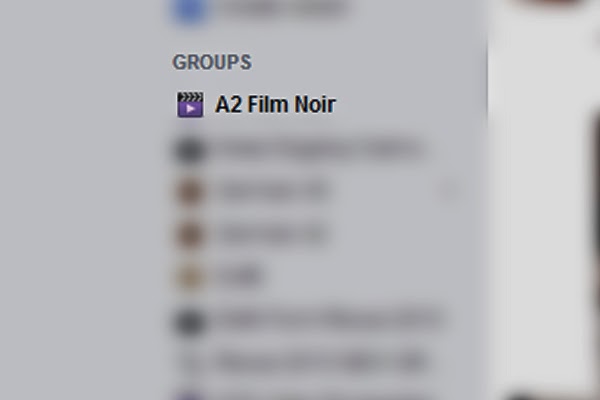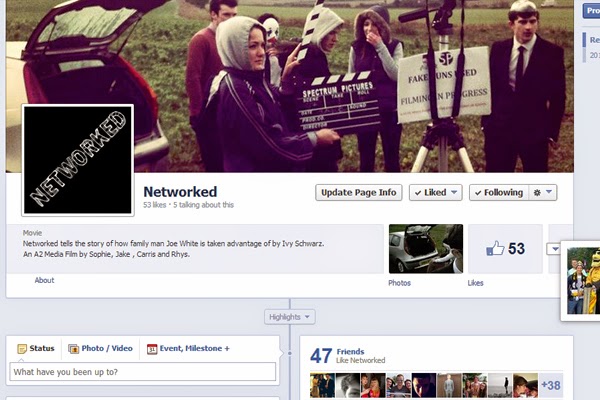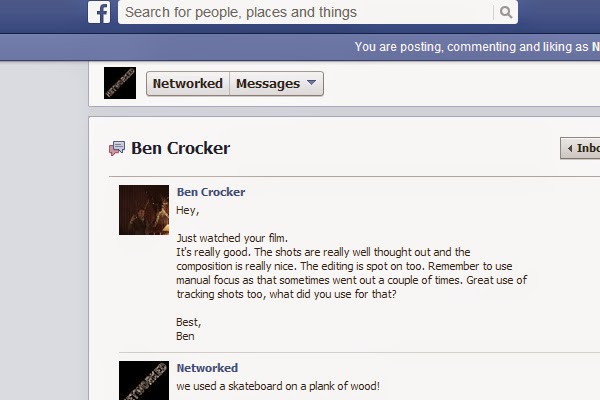Editorial Programs

Photoshop was used to create both ancillary tasks. The image below to the left shows the first attempt at the poster next to the final poster. It shows the development in ability in Photoshop as time has passed, as the 1st attempt was completed within 2 weeks of the projects start. It gave me time to build up skills in layering and masking, resulting in the final poster looking more industry standard.
The time lapse video below shows production of the film review, as I create my own take on an online film review. I thought it would be important to make the whole review from scratch, as this would ensure that no copyrights were breached in the project. We went through so much trouble in our film to ensure copyright sound was removed, it would have been silly to stop now.
In reality, another product from Adobe called InDesign would be used to create the PDF versions of film reviews, for the content in magazines and newspapers, but because mine was web based, the website hosters can add links to the page directly from Photoshop using the slicing tool to create HTML links.
The image underneath to the left shows a screenshot from the making of the introduction on AE. It shows how many features the programme has, and at first glance can look quite complicated, but it really isn't.
The vast majority of the programme is dependant on key framing abilities, which is also true with Premier Pro. Opacity, movement, audio levels and colour can all be controlled using key frames, and can be set to change at specific times. The video below shows the introduction video with a voice overlay explaining what is happening.
Unfortunately, the credits were not used due to time constrictions. This was animated in After Effects through a plug in called Plexus. This plug in allows the user to create particles and connect them in a 3D environment with lines and/or shapes. This can be seen below.
Please click here for more information about our use of AE for colour correction purposes.
Here are a handful of films that were cut in Premier Pro:
Monsters (2010)
The Social Network (2010)
Captain Abu Raed (2007)
We integrated products well, we used Premier Pro with Photoshop to create the camera shutter effect when Joe has his photo taken in the film. These snapshots had a HUD added as an overlay, so the opacity in Premier Pro was brought down so the background image could be seen through.
The video below show a time lapse edit of networked on Premier Pro, demonstrating our groups abilities in multiple programmes.
The image below to the left shows are screen capture of footage that has just finished rendering in Vegas Pro. That is the voice recording just below. So Vegas can be used not only for video production but also to produce mp3 audio tracks aswell.
Web Applications
- Group Communication
 This was useful as we could to to each other instantly about issues between shoots and even to communicate about blog work. We used Facebook to share files and give each other pictures for blogs. I think that the completion of this unit would have been made much harder without Facebook as we would not have had as much opportunity to discuss group work.
This was useful as we could to to each other instantly about issues between shoots and even to communicate about blog work. We used Facebook to share files and give each other pictures for blogs. I think that the completion of this unit would have been made much harder without Facebook as we would not have had as much opportunity to discuss group work.- Film Promotion
 Within 4 hours of our Facebook page being active, we had received 53 page likes. This meant that instantly we had 53 people that wanted to watch our film. Before releasing our film on the page, we released behind the scenes footage and sneak previews for people to look at, to keep them exited for the films release. This helped gain an audience.
Within 4 hours of our Facebook page being active, we had received 53 page likes. This meant that instantly we had 53 people that wanted to watch our film. Before releasing our film on the page, we released behind the scenes footage and sneak previews for people to look at, to keep them exited for the films release. This helped gain an audience.- Audience Feedback
 Audience feedback was very useful from Facebook users, as they were active fans of our film. They had seen the previews and would have understood the setting of the film better. The comment on the image placed to the right shows a constructive comment from a university student who studies film.
Audience feedback was very useful from Facebook users, as they were active fans of our film. They had seen the previews and would have understood the setting of the film better. The comment on the image placed to the right shows a constructive comment from a university student who studies film.
Youtube played a large role in the evaluation, planning and the construction of our final product. We uploaded multiple verisons of rough cuts, some with; some without sound. The screenshot below shows the videos that we uploaded to an unlisted state, so only our group could see them.
Fortunately, YouTube noticed that we had used third party copyrighted content. After we had uploaded the draft, a message popped up which informed us that it is advised that we change our soundtrack. Because of this, we altered our whole soundtrack to non-copyright material. If this didn't happen, we could have been in trouble with large music companies.
Youtube allows the users to embed files, which is what we have done on our website, blogs and Facebook page. It is a customisable iFrame, which allows the user to change dimensions of the embedded document, so that it fits the size of the page - allowing a wider range of audience to view it.
This mentions any other media that I may have missed out above.


















No comments:
Post a Comment